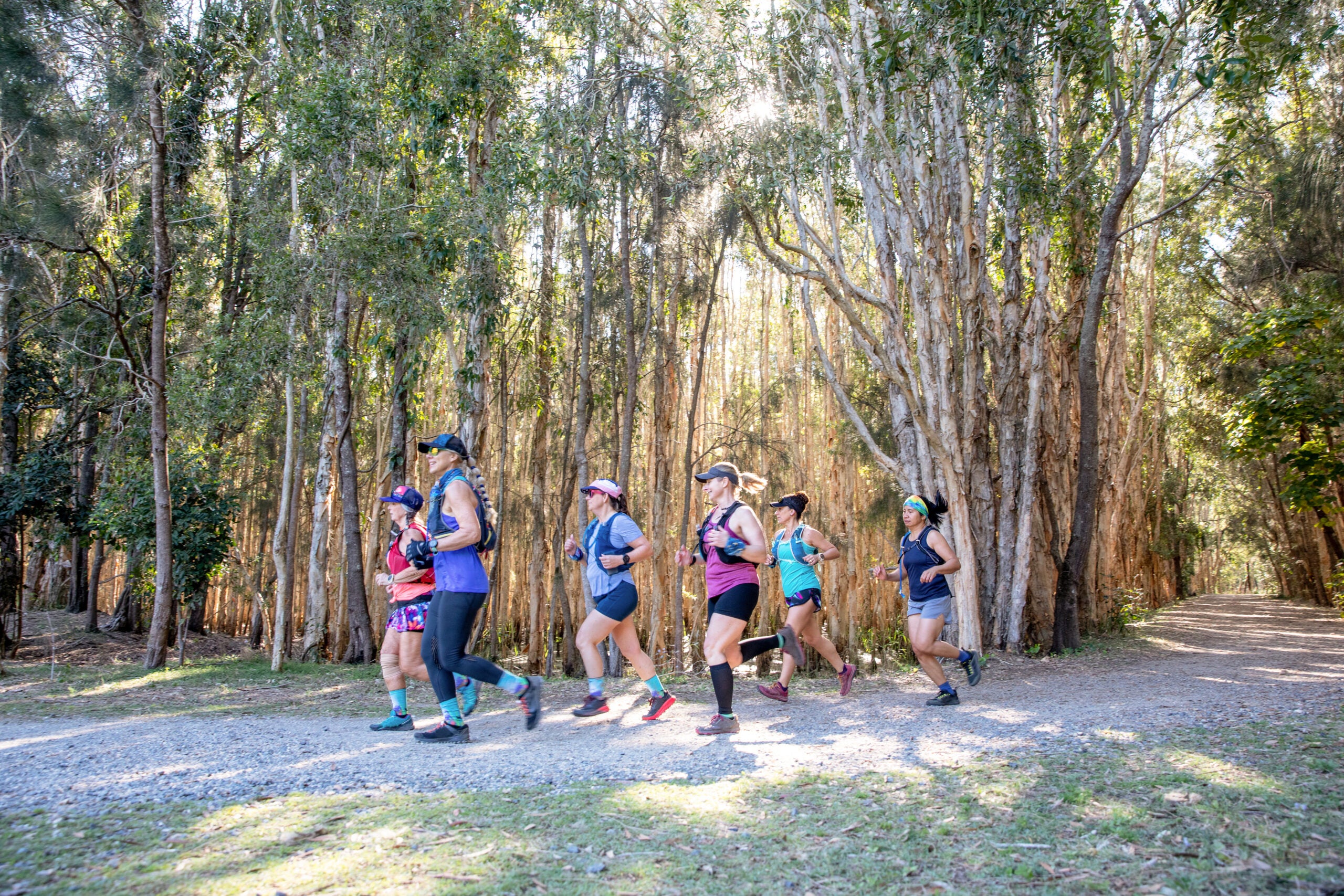The Surprising Connection Between Training Intensity And Long-Term Growth

(Photo: Getty Images)
For me, the coolest part of training theory is how every single athlete is an N = 1 experiment. Physiology can vary so wildly among athletes that appear similar from the outside. Imagine two athletes who finish together to tie for the win at a 50K, each collapsing after giving it their all. One could have more type II faster-twitch muscle fibers, a higher VO2 max, a gut microbiome that processes complex carbohydrates more efficiently, different hip morphology that handles climbing better, etc. the other might respond with type I slow-twitch muscle fibers that respond to higher volume training, a neurobio-logical context that makes them more fatigue resistant, and timing within their menstrual cycle that provides the optimal hormonal context for their peak performance. Which athlete trained best? The answer is the favorite answer of coaches, lawyers, and diaper-buyers everywhere: “Depends!”
An emerging field of study is looking to smooth out the rough edges inherent in N = 1 experiments by aggregating different training approaches, then charting it out to see what is best for long-term growth beyond the usual 6-week time horizons of lab-based interventions. That long-term focus is especially key because of how most athletes respond to increased intensity, with rapid fitness improvement followed by stagnation. If a study is zoomed-in, looking over short time scales, it might just catch the rapid fitness improvement. We need to be thinking of each athlete’s trajectory over months or years, with enough participants to smooth away some of the stunning individual variation among athletes that may seem identical from the outside.
A few fascinating recent studies provide some exciting answers that can inform your approach to training.
RELATED: Why I’ll Never Use A Run-Sharing App
A September 2021 study in the Journal of Strength and Conditioning Research examined the training logs of 85 elite male athletes over their first seven years of serious training to draw conclusions about what drove performance changes. (The study has not been replicated in female athletes.) Volume of easy runs had the highest correlation with performance, at 0.72 at three years and 0.68 at seven years. Tempo runs became more important as an athlete developed, from 0.50 at three years to 0.58 at seven years. Short intervals under 1000 meters had a 0.56 correlation at seven years, and long, intense intervals between 1000 meters and 2000 meters had a low 0.22 correlation at seven years.
Before getting to some conclusions, let’s read a couple more studies together with those findings. A November 2021 study in the Scandinavian Journal of Medicine and Science in Sports split 60 well-trained male runners into four groups with different combinations of training intensity. (Note: the study authors are conducting a follow-up study on female athletes.) “Polarized” training involved more intense training sessions, consisting of very hard intervals twice a week. “Pyramidal” training involved moderate training, consisting of one tempo session and one session of moderately hard intervals. In two blocks of eight weeks, the four groups combined the intensities in every permutation (i.e. pyramidal-pyramidal, pyramidal-polarized, polarized-polarized, polarized-pyramidal), testing for 5K performance. While more intense polarized training resulted in immediate gains, those leveled off after 8 weeks. Meanwhile, the less intense pyramidal training involved reduced gains at first, but more sustainable progress. Polarized training seems to light a fuse–use it too early, and improvement may stagnate, at least in shorter races like a 5K. But it’s important to use or you’ll never get all you can out of performance.
RELATED: Training Predictors Of Long-Distance Running Performance
Let’s look at a couple more studies before putting it all together, but this time in a different sport. Cross country skiing has been the go-to lab for exercise science interventions, with top athletes working with physiologists for the last couple decades to chart performance and training. A February 2021 study in the Frontiers in Sports and Active Living journal examined the training characteristics of 12 world-class male long-distance skiers training for events that were several hours long. 88.7% of their endurance training was easy! A May 2021 study in PLoS One followed 31 male and female skiers from ages 16 to age 22, finding that the main change in progressing from the junior to pro ranks was increased easy training volume, rather than increased intensity. Many studies have similar findings, including on the best female skiers.

Put it all together, and it seems like the studies are pointing toward a few conclusions. First, easy training is key for long-term growth. Easy running may enhance recovery and adaptation, while also increasing the density of capillaries around muscle fibers, increasing the recruitment of slow-twitch Type I muscle fibers, improving oxygen processing and improving metabolic efficiency. There is no substitute for consistent training over time. Those adaptations feed back into more efficient intervals as well. In your own training, make sure that you are prioritizing consistent, easy efforts up to 90% of the time, including with cross training if you are volume-limited due to injuries.
RELATED: The Case For Sustainable Training Levels To Support Long-Term Growth
Second, workouts do not need to be all-out to spur long-term growth. In explaining the recent surge in sub-four-minute milers, Olympian Nick Willis tweeted: “I think coaching/training is a huge factor in this … Coaches country-wide have finally bought into threshold training as a central focus. Overkilling it with hard intervals week in and week out is finally dying out.” That overlaps with the studies finding that tempo running and controlled intervals feed into more sustainable growth. That growth likely comes from the heavily aerobic contributions at those efforts, with running economy at lactate threshold subject to much greater improvement than at VO2 max or harder anaerobic intervals, particularly after an initial growth period.
Third, athletes still need to be able to run fast. All of the studies find that athletes only get the most from their easy training and controlled intervals when they do some high-quality, efficient, shorter intervals. Otherwise, the easy running and moderate intervals may be lower output than they could be. That’s especially important for athletes that have never developed their speed on the roads or track.
But remember, every athlete is an N = 1 experiment, so even though these principles seem to apply across the athletic population, they may not apply for everyone. More studies are needed on female athletes and athletes of various ability levels. Whatever the exact training layout, it seems that training intensity for long-term growth can be broken down into pretty simple ideas:
- Train mostly easy, but don’t get caught up in heart-rate caps or holding yourself back excessively.
- Keep most of your time doing intervals controlled and smooth, but make sure you continually reinforce the top-end speed needed to optimize running economy.
- Pulse in more intense training to develop speed and prepare for specific goals, but don’t chase diminishing returns from more extended focuses on more intense work.
Do that for 10-20 years, and you’ll start to sniff your ultimate potential. Now for the fun part: getting out there and embracing the daily, monthly, and yearly grind.
David Roche partners with runners of all abilities through his coaching service, Some Work, All Play. With Megan Roche, M.D., he hosts the Some Work, All Play podcast on running (and other things), and they wrote a book called The Happy Runner. This story originally appeared in our Winter 2021 issue.